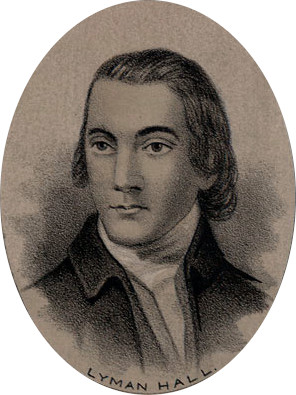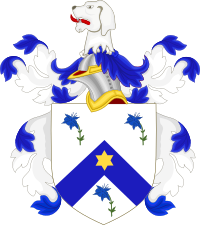Lyman Hall facts for kids
Quick facts for kids
Lyman Hall
|
|
|---|---|
 |
|
| Governor of Georgia | |
| In office January 8, 1783 – January 9, 1784 |
|
| Preceded by | John Martin |
| Succeeded by | John Houstoun |
| Delegate from Georgia to the Continental Congress |
|
| In office 1775–1777 |
|
| Personal details | |
| Born | April 12, 1724 Wallingford, Connecticut |
| Died | October 19, 1790 (aged 66) Burke County, Georgia |
| Political party | Pro-Administration |
| Residence | America |
| Profession | Clergyman Medical Doctor Member Continental Congress Governor founder of University of Georgia |
| Signature | |
Lyman Hall (born April 12, 1724 – died October 19, 1790) was an important American Founding Father. He was a doctor, a religious leader, and a politician. He is famous for signing the United States Declaration of Independence for the state of Georgia.
Hall County in Georgia is named after him. Lyman Hall was one of only four doctors who signed the Declaration of Independence. The others were Benjamin Rush, Josiah Bartlett, and Matthew Thornton.
Contents
Lyman Hall's Early Life and Family
Lyman Hall was born on April 12, 1724, in Wallingford, Connecticut. His father, John Hall, was a minister. Lyman followed a family tradition by studying at Yale College. He graduated in 1747.
In 1749, he became a minister in Stratfield Parish, which is now Bridgeport, Connecticut. His time as a minister was difficult. Some people in the church did not want him to be their leader. In 1751, he left his position after some disagreements. He continued to preach for two more years while also studying medicine and teaching school.
In 1752, he married Abigail Burr. Sadly, she passed away the next year. In 1757, he married Mary Osborne. Later, he moved to South Carolina and became a doctor in Dorchester, South Carolina. This town was near Charleston. Many settlers from the Congregationalist faith had moved there.
When these settlers moved to the Midway District in Georgia, Lyman Hall went with them. This area is now called Liberty County. Hall quickly became a respected leader in the new town of Sunbury.
Lyman Hall and the American Revolution
Before the American Revolution began, the area where Sunbury was located was full of people who wanted independence. Most of Georgia, however, was still loyal to Britain. These people were called Loyalists.
Georgia did not send a delegate to the First Continental Congress at first. But because of Lyman Hall's influence, his parish decided to send a delegate to Philadelphia for the Second Continental Congress. Hall was chosen and joined the Congress in 1775. He was one of three people from Georgia to sign the Declaration of Independence.
In January 1779, the British army burned Sunbury. Lyman Hall's family had to flee to the North. They stayed there until the British left Georgia in 1782. Hall then returned to Georgia and settled in Savannah.
In January 1783, he was elected governor of Georgia. He served in this important role for one year. As governor, Hall strongly believed in education. He thought that good education, especially religious education, would help create better citizens. His efforts led to the creation of the University of Georgia in 1785. After his term as governor ended, he went back to being a doctor.
Lyman Hall's Death and Legacy
In 1790, Lyman Hall moved to a large farm in Burke County, Georgia. This farm was close to the South Carolina border. He passed away there on October 19, 1790, at 66 years old. His wife, Mary, died a few years later in 1793.
Lyman Hall is remembered in Georgia in several ways. Hall County, Georgia, is named after him. In his home state of Connecticut, Wallingford named a high school in his honor. There are also elementary schools named after him in Liberty County, Georgia, and Hall County, Georgia.
A tall stone monument called the Signers Monument stands in front of the courthouse in Augusta, Georgia. It honors Lyman Hall, along with Button Gwinnett and George Walton. These three men were the Georgians who signed the Declaration of Independence. Lyman Hall's remains were moved and re-buried at this monument in 1848.
See also
 In Spanish: Lyman Hall para niños
In Spanish: Lyman Hall para niños


